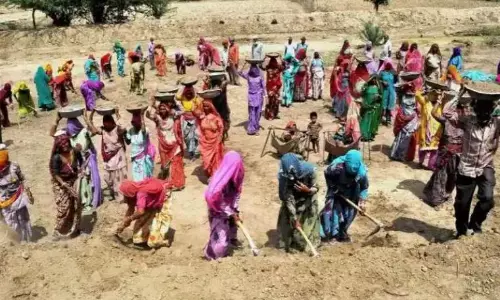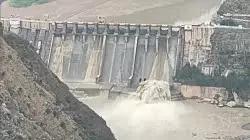
Water from Salal, Baglihar dams released by India
text_fieldsPhoto: ANI
Srinagar: Authorities on Thursday opened the gates of two dams in Jammu and Kashmir—the Salal hydroelectric project in Reasi and the Baglihar project in Ramban—allowing water from the Chenab River to flow into Pakistan.
According to officials, the decision was prompted by a sharp rise in water levels following heavy rainfall in the region. Three gates at the Salal project and two at Baglihar were reportedly opened to manage the increased water volume.
Last week, the gates had been shut, causing the Chenab’s water level to drop to a record low. This move had followed India’s suspension of the Indus Waters Treaty in response to the April 22 terror attack targeting tourists in Pahalgam and was aimed at halting the flow of water to Pakistan.
Officials noted that the Chenab River, which typically flows at a height of 25 to 30 feet, had seen a dramatic decline to just around 2 feet after the gates of the Salal and Baglihar dams were closed the previous week.
This restriction significantly reduced the downstream flow of water into Pakistan, effectively drying up parts of the river, TNIE reported.
In an unusual development, residents in the Akhnoor area of Jammu were reportedly able to cross the Chenab on foot, something not seen before.
India’s dams at Baglihar in Ramban, Salal in Reasi, and Kishanganga in Bandipora provide it with the technical ability to control the timing and quantity of water released to Pakistan.
Under the Indus Waters Treaty (IWT), India has full rights over the eastern rivers—Sutlej, Beas, and Ravi—while Pakistan holds rights over the western rivers, including the Indus, Jhelum, and Chenab.
























